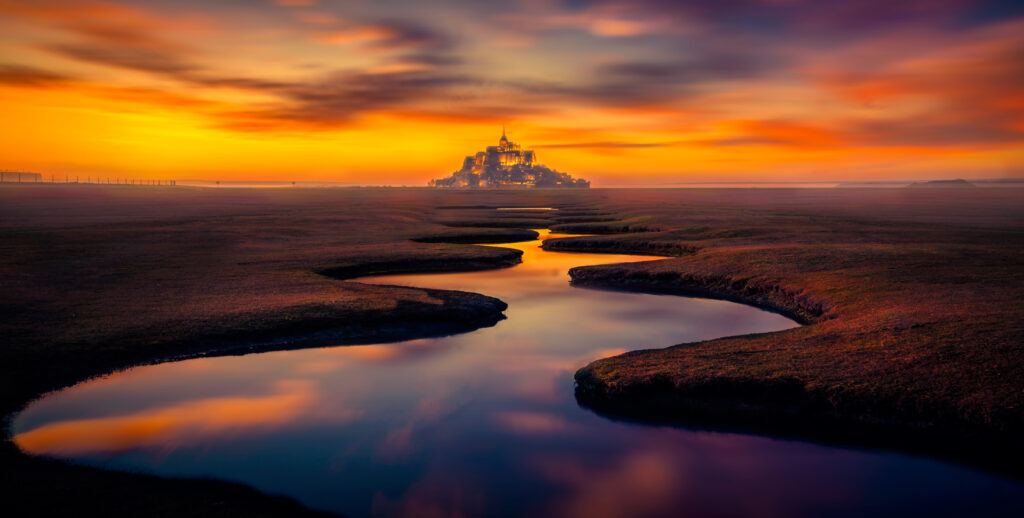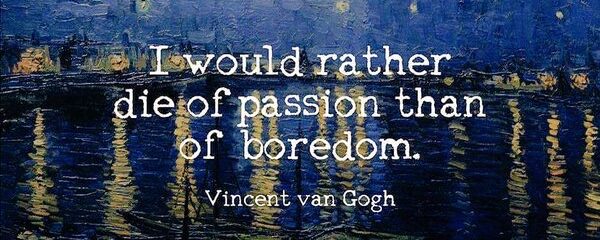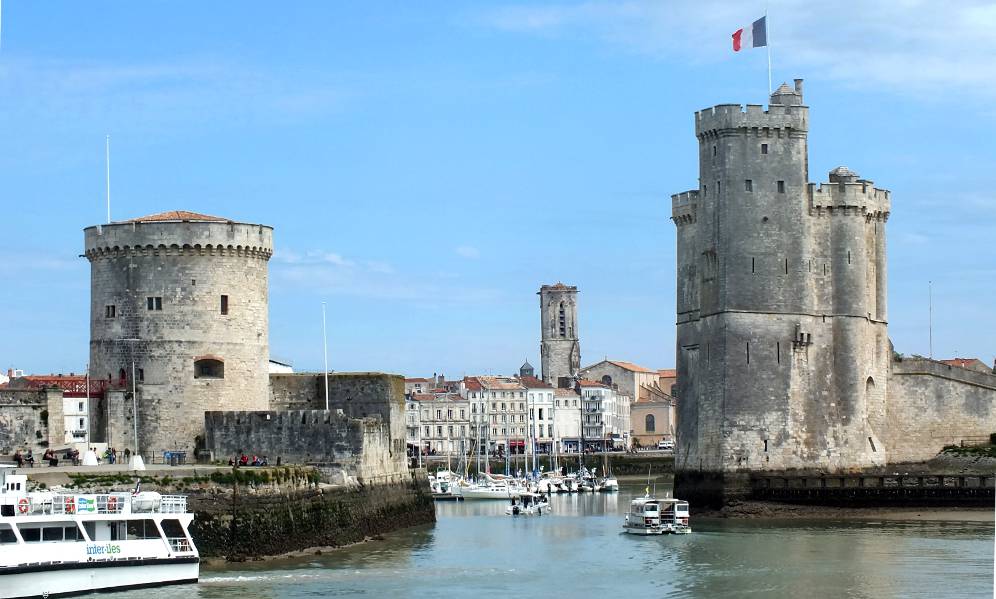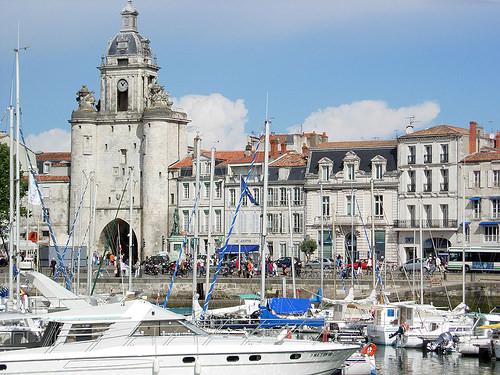
Qui vivra verra – the future will tell.
L’habit ne fait pas le moine – appearances can sometimes mislead one’s better judgement.
Chacun voit midi à sa porte – every individual is occupied, first and foremost, with his or her own personal interests, and each feels their subjective opinions as objective truths.
Mieux vaut prévenir que guérir – It is better to prevent than to heal.
Il n’y a pas plus sourd que celui qui ne veut pas entendre – No one is as deaf as the one who does not want to listen.
France République française is a country primarily located in Western Europe, consisting of metropolitan France and several overseas regions and territories. The metropolitan area of France extends from the Rhine to the Atlantic Ocean and from the Mediterranean Sea to the English Channel and the North Sea. The overseas territories include French Guiana in South America and several islands in the Atlantic, Pacific and Indian Oceans. France borders Belgium, Luxembourg and Germany to the northeast, Switzerland, Monaco and Italy to the east, Andorra and Spain to the south, as well as the Netherlands, Suriname and Brazil in the Americas. France is a unitary semi-presidential republic with its capital in Paris, the country’s largest city and main cultural and commercial centre. During the Iron Age, what is now metropolitan France was inhabited by the Gauls. The area was annexed by Rome in 51 BC, developing a distinct Gallo-Roman culture that laid the foundation of the French language. The Germanic Franks arrived in 476 and formed the Kingdom of Francia, which became the heartland of the Carolingian Empire. The Treaty of Verdun of 843 partitioned the empire, with West Francia becoming the Kingdom of France in 987. In the High Middle Ages, France was a highly decentralized feudal kingdom in which the authority of the king was barely felt. King Philip Augustus achieved remarkable success in the strengthening of royal power and the expansion of his realm, doubling its size and defeating his rivals. By the end of his reign, France had emerged as the most powerful state in Europe. In the mid-14th century, French monarchs were victorious in the Hundred Years’ War with England. The Italian Wars with Spain followed during the Renaissance. French culture flourished and a global colonial empire was started, which by 1900 would become the second largest in the world. The second half of the 16th century was dominated by religious civil wars with Catholics expelling Protestant (Huguenots), which severely weakened the country. But France once again emerged as Europe’s dominant cultural, political, and military power in the 17th century under Louis XIV following the Thirty Years’ War. Despite the wealth of the nation the government had inadequate financial and taxation systems that could not fund endless and costly wars. Especially costly were the Seven Years’ War and the American War of Independence. The French Revolution in 1789 saw the fall of the absolute monarchy that characterized the Ancien Régime. The French First Republic drafted the Declaration of the Rights of Man and of the Citizen. The declaration expresses the nation’s ideals to this day. In 1799-1814 France reached its political and military zenith under Napoléon Bonaparte, subjugating much of continental Europe and establishing the First French Empire. The French Revolutionary and Napoleonic Wars shaped the course of European and world history. After the collapse of the empire and a relative decline, France endured a tumultuous succession of governments culminating in the establishment of the French Third Republic in 1870 in the midst of the Franco-Prussian War. France was one of the prominent participants of World War I, from which it emerged victorious, and was one of the Allied powers in World War II, but came under occupation by the Axis in 1940. Following liberation in 1944, a Fourth Republic was established and later dissolved in the course of the Algerian War. The Fifth Republic, led by Charles de Gaulle, was formed in 1958 and remains to this day. Algeria and nearly all other French colonies became independent in the 1960s, with most retaining close economic and military connections with France.
Annecy
Annecy is the prefecture and largest city of the Haute-Savoie department in the Auvergne-Rhône-Alpes region of Southeastern France. It lies on the northern tip of Lake Annecy, 35 kilometres (22 mi) south of Geneva, Switzerland. Nicknamed the “Pearl of French Alps” in Raoul Blanchard’s monograph describing its location between lake and mountains, the city controls the northern entrance to the lake gorge. Due to a lack of available building land between the lake and the protected Semnoz mountain, its population has remained stagnant, around 50,000 inhabitants, since 1950. However, the 2017 merger with several ex-communes extended the city population to 126,924 inhabitants and 170,753 for its urban area, placing Annecy seventh in the Auvergne-Rhône-Alpes region.
Avignon
Avignon is the prefecture of the Vaucluse department in the Provence-Alpes-Côte d’Azur region of Southeastern France. Between 1309 and 1377, during the Avignon Papacy, seven successive popes resided in Avignon and in 1348 Pope Clement VI bought the town from Joanna I of Naples. Papal control persisted until 1791 when, during the French Revolution, it became part of France. The town is now the capital of the Vaucluse department and one of the few French cities to have preserved its ramparts.
Arle
Arles is a city and commune in the south of France, a subprefecture in the Bouches-du-Rhône department of the Provence-Alpes-Côte d’Azur region, in the former province of Provence. Many artists have lived and worked in this area because of the southern light, including Pablo Picasso, Paul Gauguin, Jacques Réattu, and Peter Brown. The Dutch post-Impressionist painter Vincent van Gogh lived in Arles from 1888 to 1889, and produced over 300 paintings and drawings during his time there. These are in internationally known museums and private collections around the world. An international photography festival has been held annually in the city since 1970.
Bordeaux
Bordeaux is a port city on the river Garonne in the Gironde department in Southwestern France. Its inhabitants are called “Bordelais” (for men) or “Bordelaises” (women). The term “Bordelais” may also refer to the city and its surrounding region. Crossed by the Garonne River and bordering the Atlantic Coast, the metropolis, a perfect example of the Age of Enlightment, has been showcasing since the 18th century its blond and golden facades, its courtyards and monumental squares, as well as its lively streets accompanied by its French-style gardens. A world capital of wine with its castles and vineyards of the Bordeaux region that stand on the hillsides of the Gironde and is home to the world’s main wine fair, Vinexpo. Bordeaux is also one of the centers of gastronomy and business tourism for the organization of international congresses. It is a central and strategic hub for the aeronautics, military and space sector, home to international companies such as Dassault Aviation, Ariane Group, Safran and Thalès. The link with aviation dates back to 1910, the year the first airplane flew over the city. A crossroads of knowledge through university research, it is home to one of the only two megajoule lasers in the world, as well as a university population of nearly 100,000 students within the Bordeaux metropolis.
Chamonix – Mont Blanc
Chamonix-Mont-Blanc, more commonly known as Chamonix, is a commune in the Haute-Savoie department in the Auvergne-Rhône-Alpes region of Southeastern France. It was the site of the first Winter Olympics in 1924. In 2017, it had a population of 8,611. Situated to the north of Mont Blanc, between the peaks of the Aiguilles Rouges and the notable Aiguille du Midi, Chamonix is one of the oldest ski resorts in France. The Chamonix commune is popular with skiers and mountain enthusiasts; via the cable car lift to the Aiguille du Midi it is possible to access the off-piste (backcountry) ski run of the Vallée Blanche.
Cannes
Cannes is a city located on the French Riviera. It is a commune located in the Alpes-Maritimes department, and host city of the annual Cannes Film Festival, Midem, and Cannes Lions International Festival of Creativity. The city is known for its association with the rich and famous, its luxury hotels and restaurants, and for several conferences.
La Rochelle
La Rochelle is a city on the central west coast of France and a seaport on the Bay of Biscay, a part of the Atlantic Ocean. It is the capital of the Charente-Maritime department. Situated on the edge of the Atlantic Ocean the city is connected to the Île de Ré by a 2.9-kilometre (1.8-mile) bridge completed on 19 May 1988. Its harbour opens into a protected strait, the Pertuis d’Antioche since the Middle-Ages. It is in fact a “Door océane” by the presence of its three ports (of fishing, trade and yachting). A city of strong commercial tradition, its port was active from its origins. It underwent sustained development in the classic period, and maintained standing in the contemporary period because of its port La Pallice. This is the only deep water port of the French Atlantic coast; it is ranked as the sixth-most important port nationally. The city traces its origins to the Gallo-Roman period, attested by the remains of important salt marshes and villas. The Dukes of Aquitaine granted it a charter as a free port in 1130. The opening of the English market following the second marriage of Eleanor of Aquitaine in 1152, the presence of the Knights Templar and the Knights of Saint John of Jerusalem, quickly made this small town the largest port on the Atlantic.
Les Francofolies de La Rochelle is multi-genre music festival in the scenic town of La Rochelle, France. Dating back to 1985, the festival has built its reputation by showcasing the best French and french-speaking acts, regardless of genre. Spread throughout multiple venues in La Rochelle, the historic seaport town in western France serves as an idyllic backdrop for the contemporary sounds coming from the stages.
Lyon
Lyon is the third-largest city and second-largest urban area of France. It is located at the confluence of the rivers Rhône and Saône, about 470 km (292 mi) south-east of Paris, 320 km (199 mi) north of Marseille and 56 km (35 mi) northeast of Saint-Étienne. Inhabitants of the city are called Lyonnais. Former capital of the Gauls at the time of the Roman Empire, Lyon is the seat of an archbishopric whose holder bears the title of Primate of the Gauls. Lyon became a major economic hub during the Renaissance. The city is recognized for its cuisine and gastronomy, and historical and architectural landmarks; as such, the districts of Old Lyon, the Fourvière hill, the Presqu’île and the slopes of the Croix-Rousse are inscribed on the UNESCO world heritage list. Lyon was historically an important area for the production and weaving of silk. Lyon played a significant role in the history of cinema: it is where Auguste and Louis Lumière invented the cinematograph. It is also known for its light festival, the Fête des Lumières, which begins every 8 December and lasts for four days, earning Lyon the title of Capital of Lights.
Marseille
Marseille is the prefecture of the department of Bouches-du-Rhône and region of Provence-Alpes-Côte d’Azur in France. It is located on the coast of the Gulf of Lion, part of the Mediterranean Sea, near the mouth of the Rhône. One of Europe’s oldest cities, founded around 600 BC and known to the ancient Greeks as Massalia. Marseille has been a trading port since ancient times. In particular, it experienced a considerable commercial boom during the colonial period and especially during the 19th century, becoming a prosperous industrial and trading city. Nowadays the Old Port still lies at the heart of the city where the manufacturing of soap, its famous savon de Marseille, began some 6 centuries ago. Overlooking the port is the Basilica of Notre-Dame-de-la-Garde or “Bonne-mère” for the people of Marseille, a Romano-Byzantine church and the symbol of the city. Inherited from this past, the Grand Port Maritime de Marseille (GPMM) and the maritime economy are major poles of regional and national activity and Marseille remains the first French port, the second Mediterranean port and the fifth European port. Since its origins, Marseille’s openness to the Mediterranean Sea has made it a cosmopolitan city marked by cultural and economic exchanges with Southern Europe, the Middle East, North Africa and Asia. In Europe, the city has the third largest Jewish community after London and Paris.
Nantes
Nantes is a city in Loire-Atlantique on the Loire, 50 km (31 mi) from the Atlantic coast. Nantes belongs historically and culturally to Brittany, a former duchy and province, and its omission from the modern administrative region of Brittany is controversial. Nantes was identified during classical antiquity as a port on the Loire. It was the seat of a bishopric at the end of the Roman era before it was conquered by the Bretons in 851. Although Nantes was the primary residence of the 15th-century dukes of Brittany, Rennes became the provincial capital after the 1532 union of Brittany and France. During the 17th century, after the establishment of the French colonial empire, Nantes gradually became the largest port in France and was responsible for nearly half of the 18th-century French Atlantic slave trade. The French Revolution resulted in an economic decline, but Nantes developed robust industries after 1850 (chiefly in shipbuilding and food processing). Deindustrialization in the second half of the 20th century spurred the city to adopt a service economy.
Nice
Nice Located in the French Riviera, on the south east coast of France on the Mediterranean Sea, at the foot of the Alps, Nice is the second-largest French city on the Mediterranean coast and the second-largest city in the Provence-Alpes-Côte d’Azur region after Marseille. The city is nicknamed Nice la Belle (Nissa La Bella in Niçard), which means Nice the Beautiful, which is also the title of the unofficial anthem of Nice, written by Menica Rondelly in 1912. The area of today’s Nice contains Terra Amata, an archaeological site which displays evidence of a very early use of fire 380,000 years ago. Around 350 BC, Greeks of Marseille founded a permanent settlement and called it Nikaia, after Nike, the goddess of victory. Through the ages, the town has changed hands many times. Its strategic location and port significantly contributed to its maritime strength. For centuries it was a dominion of Savoy, and was then part of France between 1792 and 1815, when it was returned to the Kingdom of Piedmont-Sardinia until its re-annexation by France in 1860. The natural environment of the Nice area and its mild Mediterranean climate came to the attention of the English upper classes in the second half of the 18th century, when an increasing number of aristocratic families took to spending their winters there. In 1931 following its refurbishment the city’s main seaside promenade, the Promenade des Anglais (“Walkway of the English”) was inaugurated by Prince Arthur, Duke of Connaught, and owes its name to visitors to the resort. These included Queen Victoria along with her son Edward VII who spent winters there, and Nice born Henry Cavendish, who discovered hydrogen. The clear air and soft light have particularly appealed to notable painters, such as Marc Chagall, Henri Matisse, Niki de Saint Phalle and Arman. Their work is commemorated in many of the city’s museums, including Musée Marc Chagall, Musée Matisse and Musée des Beaux-Arts. International writers have also been attracted and inspired by the city. Frank Harris wrote several books including his autobiography My Life and Loves in Nice. Friedrich Nietzsche spent six consecutive winters in Nice, and wrote Thus Spoke Zarathustra here. While Anton Chekov completed writing his play Three Sisters when he was living in the city. Nice’s appeal extended to the Russian upper classes, Prince Nicholas Alexandrovich, heir apparent to Imperial Russia died in Nice and was a patron of the Russian Orthodox Cemetery, Nice where Princess Catherine Dolgorukova, morganatic wife of the Tsar Alexander II of Russia, is buried. As are General Dmitry Shcherbachev and General Nikolai Yudenich leaders of the anti-Communist White Movement.
Paris
Paris is the capital and most populous city of France, with an estimated population of 2,175,601 residents as of 2018, in an area of more than 105 square kilometres (41 square miles). Since the 17th century, Paris has been one of Europe’s major centres of finance, diplomacy, commerce, fashion, science and arts. The City of Paris is the centre and seat of government of the Île-de-France, or Paris Region, which has an estimated official 2017 population of 12,174,880, or about 18 per cent of the population of France. The Paris Region had a GDP of €709 billion ($808 billion) in 2017. According to the Economist Intelligence Unit Worldwide Cost of Living Survey in 2018, Paris was the second most expensive city in the world, after Singapore, and ahead of Zürich, Hong Kong, Oslo and Geneva. Another source ranked Paris as most expensive, on a par with Singapore and Hong Kong, in 2018.
Disneyland Paris
Disneyland Paris is an entertainment resort in Chessy, France, a town located 32 km (20 mi) east of the centre of Paris. It encompasses two theme parks, many resort hotels, Disney Nature Resorts, a shopping, dining, and entertainment complex, and a golf course, in addition to several additional recreational and entertainment venues. Disneyland Park is the original theme park of the complex, opening with the resort on 12 April 1992. A second theme park, Walt Disney Studios Park, opened in 2002, 10 years after the original park. Disneyland Paris celebrated its 25th anniversary in 2017. Within 25 years of opening, 320 million people visited Disneyland Paris, making it the most visited theme park in Europe. Disneyland Paris is also the only Disney resort outside of the United States to be completely owned by The Walt Disney Company.
Rennes
Rennes is a city in the east of Brittany in northwestern France at the confluence of the Ille and the Vilaine. Rennes’s history goes back more than 2,000 years, at a time when it was a small Gallic village named Condate. Together with Vannes and Nantes, it was one of the major cities of the ancient Duchy of Brittany. From the early sixteenth century until the French Revolution, Rennes was a parliamentary, administrative and garrison city of the historic province of Brittany of the Kingdom of France as evidenced by its 17th century Parliament’s Palace. Rennes played an important role in the Stamped Paper Revolt in 1675. After the destructive fire of 1720, the medieval wooden center of the city was partially rebuilt in stone. Remaining mostly rural until the Second World War, Rennes really developed in the twentieth century. Since the 1950s, Rennes has grown in importance through rural flight and its modern industrial development, partly automotive. The city developed extensive building plans to accommodate upwards of 200,000 inhabitants.
Saumur
Saumur is a commune in the Maine-et-Loire department in western France. The historic town is located between the Loire and Thouet rivers and is surrounded by the vineyards of Saumur itself, Chinon, Bourgueil, Coteaux du Layon, etc. which produce some of France’s finest wines.
St. Tropez
Saint-Tropez is a town on the French Riviera, 68 kilometres (42 miles) west of Nice and 100 kilometres (62 miles) east of Marseille in the Var department of the Provence-Alpes-Côte d’Azur region, Southern France. The adjacent narrow body of water is the Gulf of Saint-Tropez (Golfe de Saint-Tropez). Saint-Tropez was a military stronghold and fishing village until the beginning of the 20th century. It was the first town on its coast to be liberated during World War II as part of Operation Dragoon. After the war, it became an internationally known seaside resort, renowned principally because of the influx of artists of the French New Wave in cinema and the Yé-yé movement in music. It later became a resort for the European and American jet set and tourists.
Yvoire
Yvoire is a small medieval town in the department of Haute-Savoie, in the southeastern French region of Auvergne-Rhône-Alpes. It is located 24 kilometers (14.9 miles) northeast of Geneva.



































































































